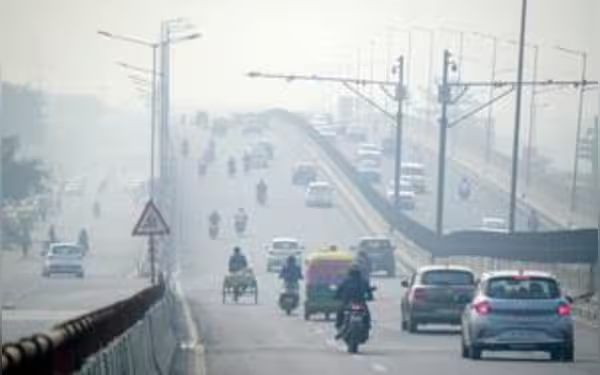Thursday, November 7, 2024 10:39 PM
Delhi Air Quality Hits Severe Levels Post-Diwali
- Delhi's AQI surpasses 400, indicating severe pollution.
- Health risks escalate for vulnerable populations.
- Government implements measures to combat air quality crisis.
 Image Credits: menafn
Image Credits: menafnDelhi's air quality has worsened post-Diwali, with AQI levels exceeding 400, raising health concerns and prompting government action.
In recent days, the air quality in New Delhi has taken a significant turn for the worse, particularly following the Diwali celebrations. The Air Quality Index (AQI) has soared above 400 in several areas of the national capital, categorizing it as 'severe.' This alarming situation has raised concerns among residents and environmentalists alike, as the health implications of such poor air quality can be dire.
According to reports, areas such as Anand Vihar, Ashok Vihar, Rohini, and Vivek Vihar have recorded AQI levels of 433, 410, 411, and 426, respectively. These figures indicate a serious deterioration in air quality, which can lead to various health issues, especially for vulnerable populations like children and the elderly. Other regions, including Dwarka and Patparganj, have also reported 'severe' AQI levels, further compounding the problem.
On Monday morning, the average 24-hour AQI in Delhi was recorded at 373, a drop from the previous day but still within the 'very poor' category. The Air Quality Early Warning System has indicated that unfavorable weather conditions, such as low temperatures and calm winds, are likely to exacerbate the situation by preventing the dispersion of pollutants. The India Meteorological Department has also predicted the presence of smog and mist in the early hours, which could further worsen air quality.
Despite a decrease in stubble burning's contribution to pollution—down to 15% on November 2 from 35% on November 1—Delhi's AQI reached a staggering 382 on Sunday, marking the highest level of the season. The National Capital Region (NCR) is not faring much better, with Noida, Ghaziabad, and Gurugram recording AQIs of 305, 295, and 276, respectively. Nearby states are also experiencing high pollution levels, with Sriganganagar at 397 and Hisar at 372.
In response to this critical situation, the Commission for Air Quality Management has implemented several measures, including the Graded Response Action Plan (GRAP). This plan aims to tackle pollution through various strategies, such as imposing penalties on construction sites, vehicles, and industries that contribute to air quality degradation. Additionally, efforts to control road dust are underway, with around 600 mechanical road-sweeping machines and water sprinklers deployed across the NCR.
The AQI scale categorizes air quality as follows: 0-50 is 'good,' 51-100 is 'satisfactory,' 101-200 is 'moderate,' 201-300 is 'poor,' 301-400 is 'very poor,' and 401-500 is 'severe.' With the current levels in Delhi, it is clear that immediate action is necessary to protect public health and the environment.
As the situation continues to unfold, it is crucial for residents to stay informed and take necessary precautions, such as wearing masks and limiting outdoor activities. The government and relevant authorities must also prioritize long-term solutions to combat air pollution, ensuring a healthier future for all. The fight against air pollution is not just a local issue; it is a collective responsibility that requires the commitment of every individual, community, and government.













